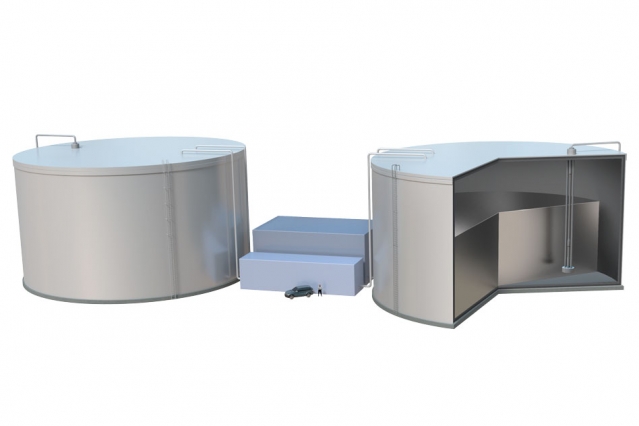MIT researchers make strides on location-independent, large-scale energy storage

Energy storage has been a hurdle for renewable energy generation for companies, municipalities, and utilities. And now a team at the Massachusetts Institute of Technology (MIT) is working on a new system that could be revolutionary for the industry by storing energy in the form of heat.
The design stores the heat generated from excess electricity in white-hot molten silicon into thermal energy, via joule heating. The light from the glowing metal can then be converted back to the grid at any time of the day.
The system is a spin-off of a project that Dr. Asegun Henry and his team began working on back in 2015 at Georgia Institute of Technology, which focused on concentrated solar power (CSP) systems.
“At that time there was a movement to look at how you could do CSP at higher temperatures so you can drop the cost running a more efficient engine. We were interested in how far we could push that,” said Henry, an associate professor in the Department of Mechanical Engineering at MIT.
The Department of Energy, which has provided funding toward the project, specifically is interested in raising temperatures of CSP to 700 to 800 degrees C [1292 to 1472 degrees F], he said. “We were interested in pushing that to 1500 degrees C [2732 degrees F], which you could use in a blind cycle. And for that reason, we started looking at alternative fluid that you could use and how you could build the infrastructure.”
According to MIT, the molten salt tanks that currently heat concentrated solar are heated to around 1,000 degrees Fahrenheit. When electricity is needed, the hot salt is pumped through a heat exchanger, which transfers the salt’s heat into steam, followed by a turbine that turns that steam into electricity.
Henry said although the technology has been around for a while, its price tag makes it difficult to compete with the low cost of natural gas. Creating a “more efficient heat engine” will help get those costs down.
The team found that at the higher temperatures they are looking to achieve, the infrastructure itself would need to be made out of ceramics.
“We managed to actually develop the ability to make a ceramic infrastructure for liquid metal. And we had a paper in ‘Nature’, late last year, where we demonstrated the highest temperature pump on record.”
Henry said that pump is what got them thinking they could manage a system at “seemingly crazy high temperatures.”
The new system would include a 10 meter-wide tank kept at “cold” temperatures of nearly 3,500 degrees Fahrenheit, which would be connected to a “hot” tank. After the liquid silicon is pumped into the hot tank, it is stored at around 4,300 degrees F.
The proposed renewable energy storage system, or Thermal Energy Grid Storage-Multi-Junction Photovoltaics (TEGS-MPV), has lovingly been called “sun in a box.”
With the cost of solar having dropped dramatically, combined with the low cost of wind energy, researchers began to examine ways that the industry could take advantage of that cheap electricity.
“One of the values of the price of electricity going down so low is that it actually helps to open up the options of storage,” Henry said. “One of the thoughts we had was if the electricity is really that cheap, maybe it could make sense from a storage perspective to actually convert the electricity back to heat, store it inexpensively and then convert it back to electricity again later,” he explained.
The initial idea behind the project was that storing heat is between 10 to 100 times cheaper than storing electricity, which would open up inexpensive options for large, massive-scale energy storage.
The technology could potentially store energy for neighborhoods or even cities.
Researchers have been looking at ways to make grid storage less expensive and working on a large scale.
“Right now, there really is no non-geographically limited, ubiquitously available storage technology,” he said. “There is no such thing really as grid storage. It’s a concept that we’d like to implement and there is pumped hydro in various locations but there isn’t something that any utility in the United States can dial up and say, ‘Okay, we want to put storage on the grid right now.'”
According to Henry, the system would also lower response time and remove any needed predictions by power system authorities. “They try to do predictions of how much people are going to use and they dial in or they dispatch power plants to produce how much they expect people to use at a certain given time of the day. There is no buffer in between. A buffer now adds a completely new mechanism to the grid. There would be a revolution in how you operate the grid,” he said.
The response time, Henry said, would be reduced from minutes or hours to seconds. “It takes a normal turbine well over 10 minutes to ramp up from no load to full load,” he said. “This would be able to do that same thing, go from essentially zero output to full output in one second or a couple seconds.”
Henry and his team published their findings this month in “Energy and Environmental Science.”
